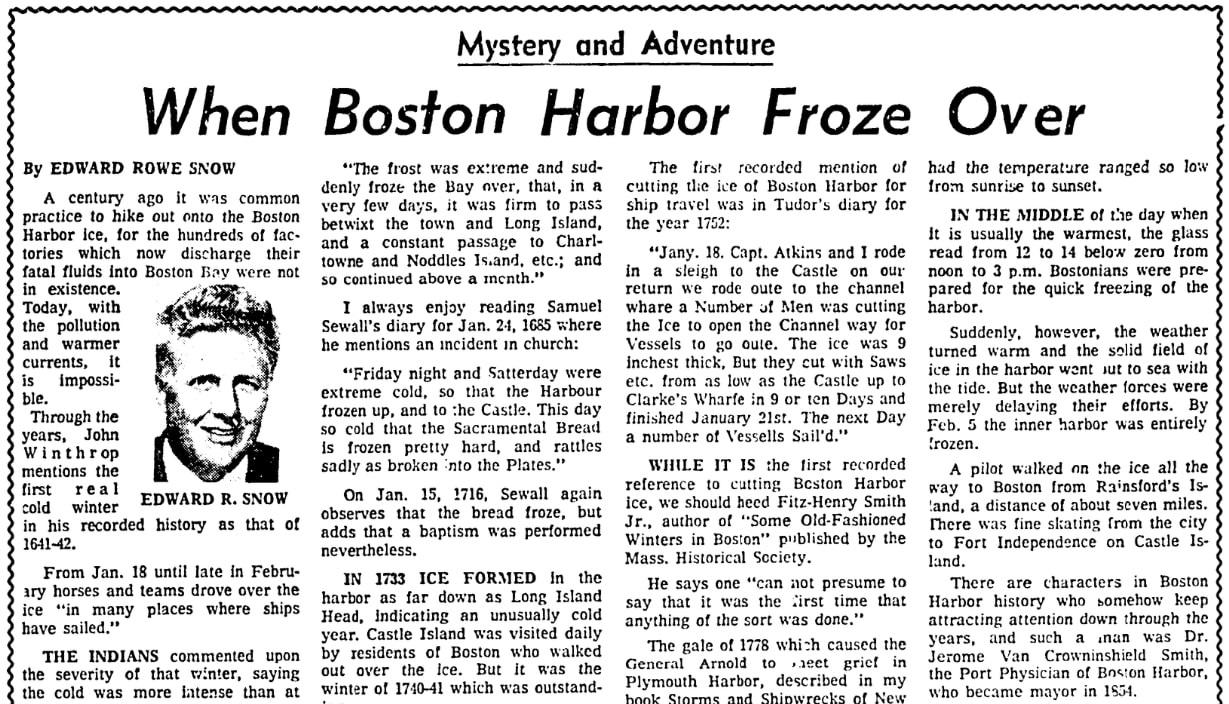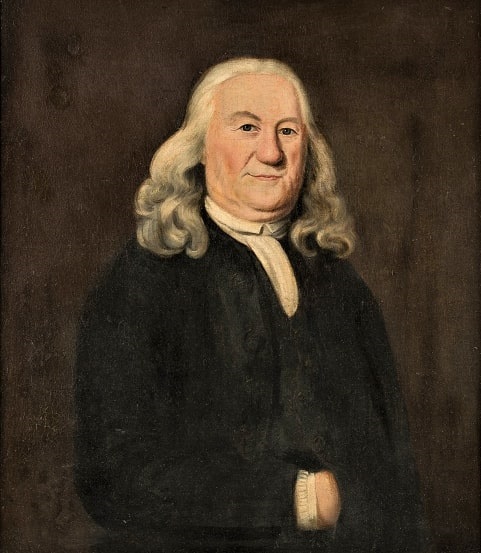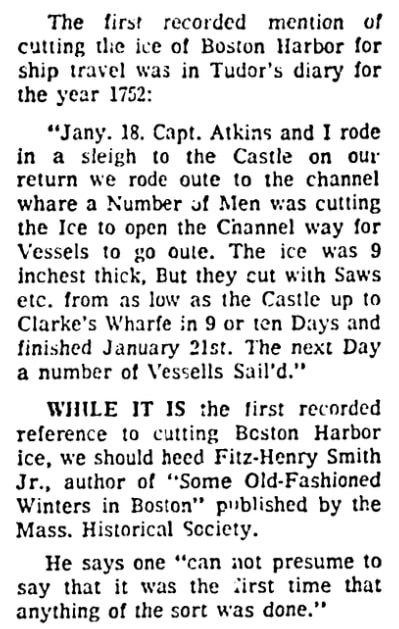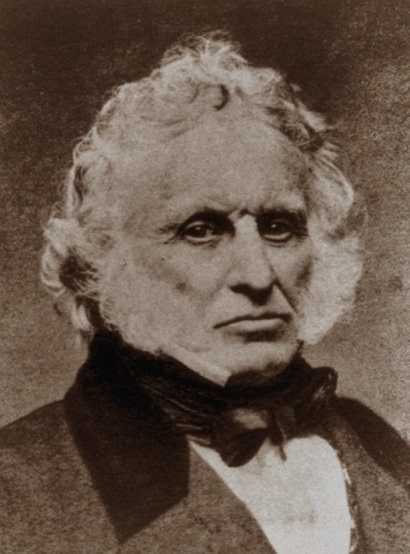Introduction: In this article, Melissa Davenport Berry features more diary entries that describe the extremely cold weather that froze Boston Harbor in the 18th century. Melissa is a genealogist who has a blog, AnceStory Archives, and a Facebook group, New England Family Genealogy and History.
As I discussed in the first part of this series (see: Genealogy Tip: Diaries), try a search looking into published diary or journal records – they will help you understand the life and times of your family.
Even if you had no idea your ancestor kept a diary or journal, there’s a chance portions of it were published – or, perhaps, snippets from the diary or journal of someone going through similar experiences in the same place at the same time as your ancestor. Newspapers sometimes printed these snippets, and an online collection of newspapers, such as GenealogyBank’s Historical Newspaper Archives, is a good place to look for them.
Today I continue with diarist John Tudor, who wrote about the prickly cold climate in Boston, as covered by historian, writer, and infamous “flying Santa,” Edward Rowe Snow, who wrote a long-time feature spot in the newspapers. I added more lines from Tudor’s diary as well.
Snow published snippets from his book The Romance of Boston Bay in the Boston Herald.

Much of Snow’s sourcing came from diaries of local Bean town residents. One of the references in my last article was from the diary of John Tudor, a baker and deacon of the church. Tudor recorded the bitter cold temperatures in the winter of 1740/41 which caused Boston Harbor to freeze over. (See: Genealogy Tip: Diaries, Part 3)

On 31 December 1751, Tudor wrote about another freeze in Boston in his diary: “This night the Harbor frose up & remain’d so til January.” On 7 January 1752: “I went from Boston on the Ice to the Castle [Island] with som Gentlemen & dined with Capt [John] Larrabee ye Commander. This Week many hundreds of people on foot and som in Slays pas’d on the Ice to the Castle & other places.”
According to Snow’s newspaper article, Tudor recorded the first-ever mention of cutting the ice of Boston Harbor, in a 1752 diary entry.

I found an article in the Boston Post-Boy that confirms Tudor’s diary entry.

This notice reported:
“Our Harbour continues frozen up, and the Ice so firm, that abundance of People daily pass from the Town to Castle William, and the Islands, &c. as well in Slays [Sleighs] or Sleds as on Foot.”
I found another article confirming Tudor’s diary entry, this one in the Boston News-Letter.

This notice reported:
“A Number of Men have been employed for some Time to cut and clear the Channel in this Harbour of Ice, and have so far accomplish’d it that several Vessels have already sail’d.”
Another worthy mention from Tudor’s diary, Christmas Day 1778:
“In the morning at sunriseing I look’d down Boston Harbour & could see no water, except a few spots call’d windholes. For the vapor was great and the Harbour as far as I could see skim’d over with Ice. I had about a gil of N. E. Rum in a Case Bottle cork’d, that stood on a shelf in the pantry. At dinner time found it froze. This was the coldest Christmas that ever I remember, nor do I remember that I ever had any Rum frose before in my keeping, having now kept house near 47 years.”

Two generations later, Tudor’s grandson Frederick Tudor (1783-1864) developed a booming industry from cutting ice, and was dubbed “The Ice King.” The Tudor Ice Company is credited as the first to ship ice to the U.S. South, and to warmer countries. His base was Pray’s Wharf in Charlestown. He too kept a diary, now housed at Harvard Business School in Boston.
Now to pull the threads of this story together. Remember John Tudor’s 1752 diary entry, in which he recorded “Capt. Atkins and I rode in a sleigh”? Well, that fellow sleigh-rider, Capt. Henry Atkins, had a daughter Deliverance Atkins who married Elias Jarvis. Their daughter Delia Jarvis married John Tudor’s son William Tudor, and their son was Frederick Tudor “The Ice King.”
William Tudor (1750-1819), co-founder of the Boston Athenaeum, compiled the journals of his father John Tudor, which include Tudor family births, deaths, and marriages, descriptions of political events in Boston, and – as I just shared – details about the weather.
Stay tuned for more Diaries!
Note on the header image: A portrait of William Tudor, son of Deacon John Tudor. From “Portraits from Deacon Tudor’s Diary” by Mrs. Henry D. Tudor, 1921, Harvard University, Cambridge, Massachusetts, p. 9.
Related Articles:
